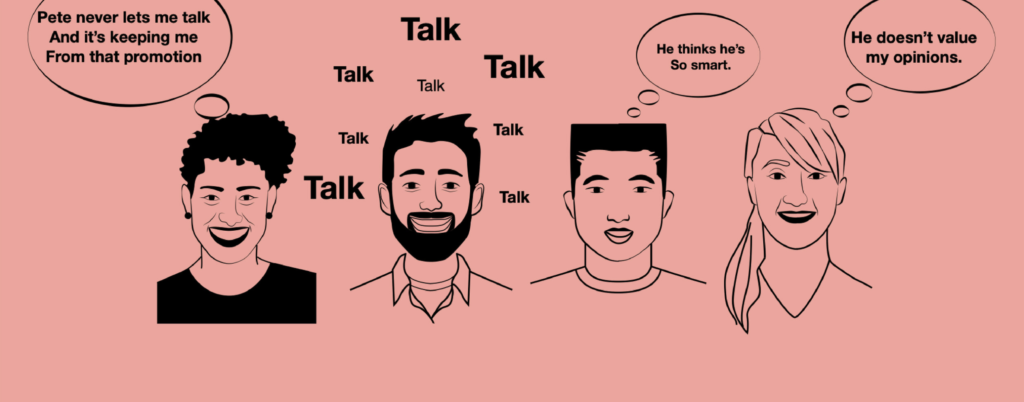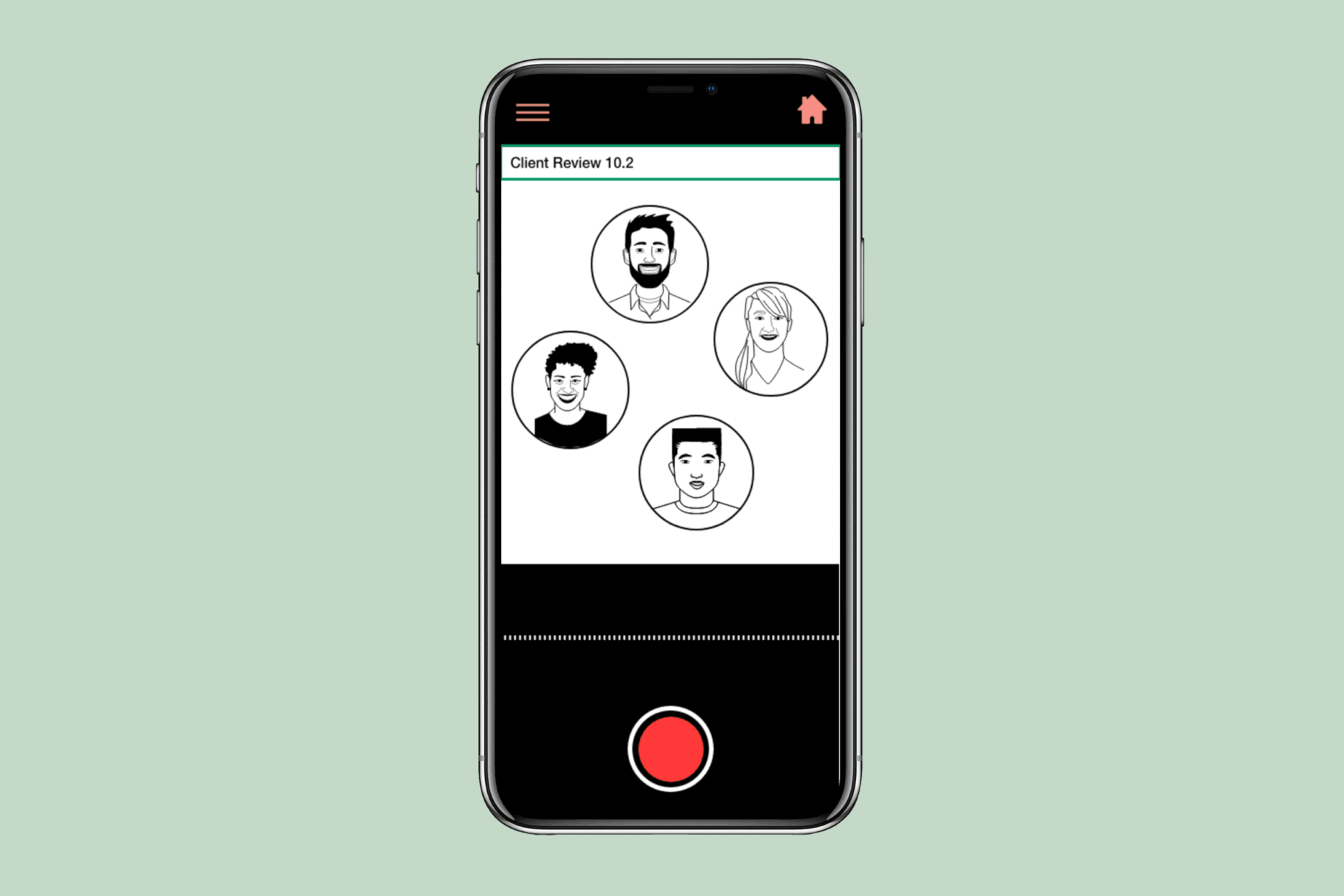Upbraid is a piece of Speculative and Critical Design that creates space for women’s voices in the workplace by adjusting the verbally dominating behavior of male colleagues.

“Upbraid is intended as a tool that businesses implement at the corporate level and integrate into employee onboarding processes and performance reviews. Individuals set up a profile with a voice recognition sample and avatar that are linked to their corporate employee ID, email and phone number. Upbraid is used on the employee’s smartphone since it is a ubiquitous and easy tool in most corporate workplaces. The app is used during meetings and team work sessions and creates a digital meeting space by visually placing the avatars of each team member into one screen environment.
Using voice recognition, the app tracks the talk time of different employees and visualizes the state of a conversation in real time by scaling up or shrinking the size of the avatars based on their talk time. If a male team member begins to dominate the talk time, his avatar will grow in size and become mean and villainous, visibly squashing the avatars of the others into the corners of the screen. If the behavior persists, Upbraid highlights the offender on the screen in red and sends warning “nudges” via text message reminding him to let others speak.
At the end of each session, Upbraid sends the team and managers a recap including each member’s talk time, number of interruptions and decibel level. Upbraid also sends each member a letter grade for their participation in the session; offering critical feedback and suggestions for improvement going forward. If a male team member does not improve over time and chooses to ignore Upbraid’s corrective suggestions, the platform begins withdrawing money from his paycheck and redistributes the funds to female teammates he silenced. This financial consequence is employed as a means of adding motivation and gravity to the situation.
With Upbraid, the responsibility of corrective action and the consequences for failing to change are placed on men; a direct reversal of the current dynamics in office environments where women suffer the consequences of not acting more like their male colleagues.”




